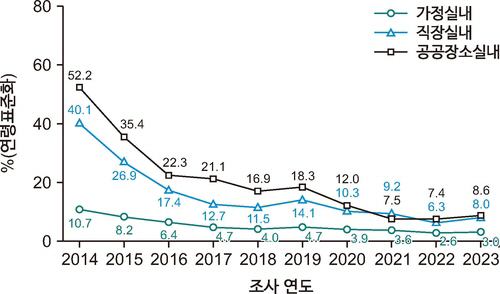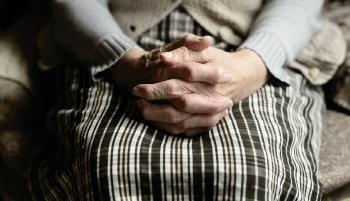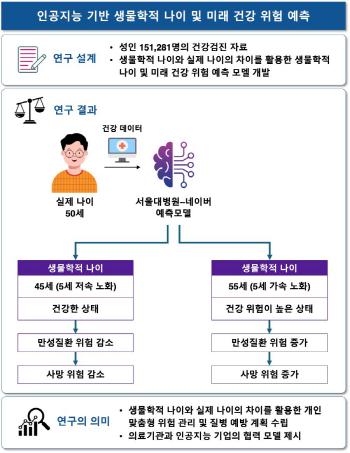Third consecutive year of decline, indirect smoking exposure rate turns upward
May 29, 2025
|
Second-hand smoking, also called secondary smoking and involuntary smoking, means drinking tobacco smoke that is smoked by others, not direct smoking.
According to the Korea Centers for Disease Control and Prevention, in the 2023 survey, non-smokers (including former smokers) of general cigarettes (including former smokers) had an 8.0% exposure to secondhand smoke in indoor spaces at work. The exposure rate to secondhand smoke in workplace indoor spaces, which was 14.1% in 2019, was down 10.3% in 2020, 9.2% in 2021 and 6.3% in 2022, the third consecutive year of decline, rebounding in 2023.
Non-smokers' exposure to secondhand smoke in indoor public places also rose from 18.3%, 12.0%, 7.5%, and 7.4% in 2019-2022, to 8.6% in 2023. Non-smokers' exposure to secondhand smoke indoors at home also fell three years from 4.7% in 2019 to 3.9%, 3.6%, and 2.6%, before rising to 3.0% in 2023.
When a non-smoker is exposed to secondhand smoke, they drink mainstream smoke, which is smoke emitted by smokers, and sidream from the end of the cigarette as cigarettes burn. Tobacco smoke is known to contain more than 69 carcinogens, including arsenic and benzene, and inhalation of sieved smoke, which accounts for about 80% of cigarette smoke, stimulates the airways and adversely affects the cardiovascular system in a short period of time.
Meanwhile, secondhand smoke from e-cigarettes is also harmful to health. Hazardous substances such as formaldehyde, acetaldehyde, and acrolein have also been detected in e-cigarettes that do not contain nicotine.
This article was translated by Naver AI translator.














